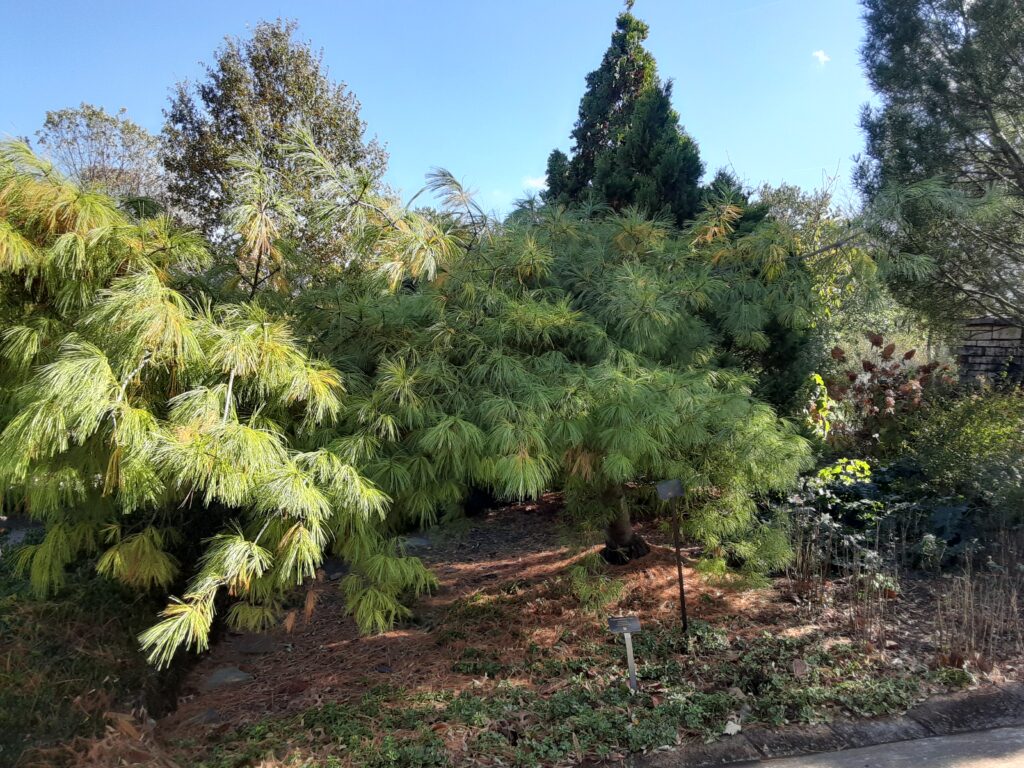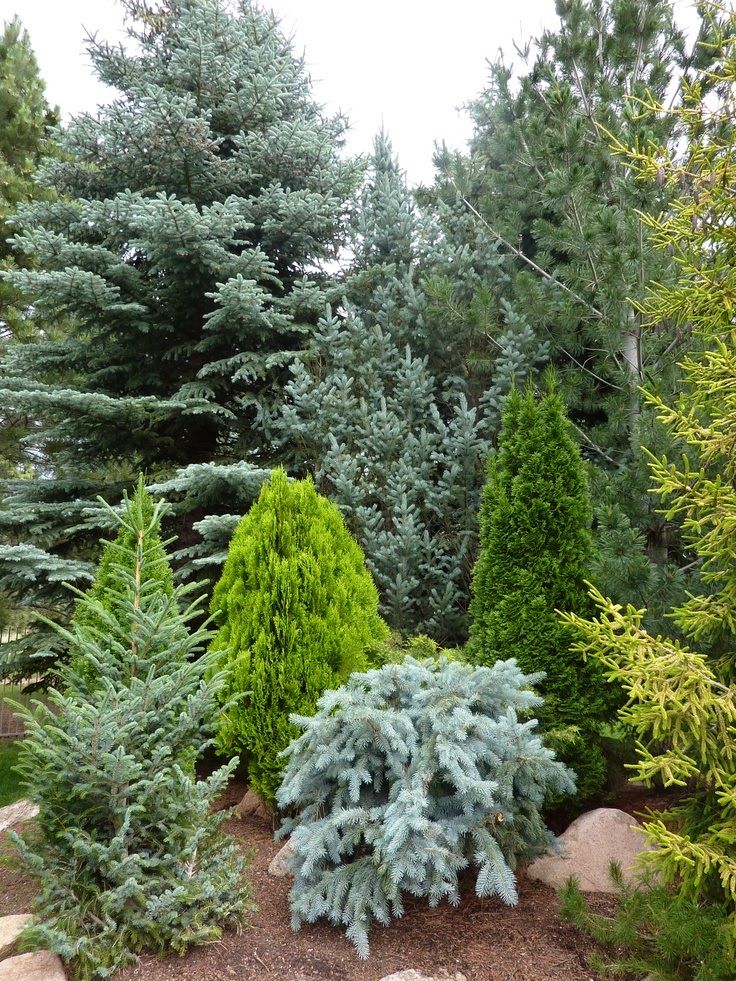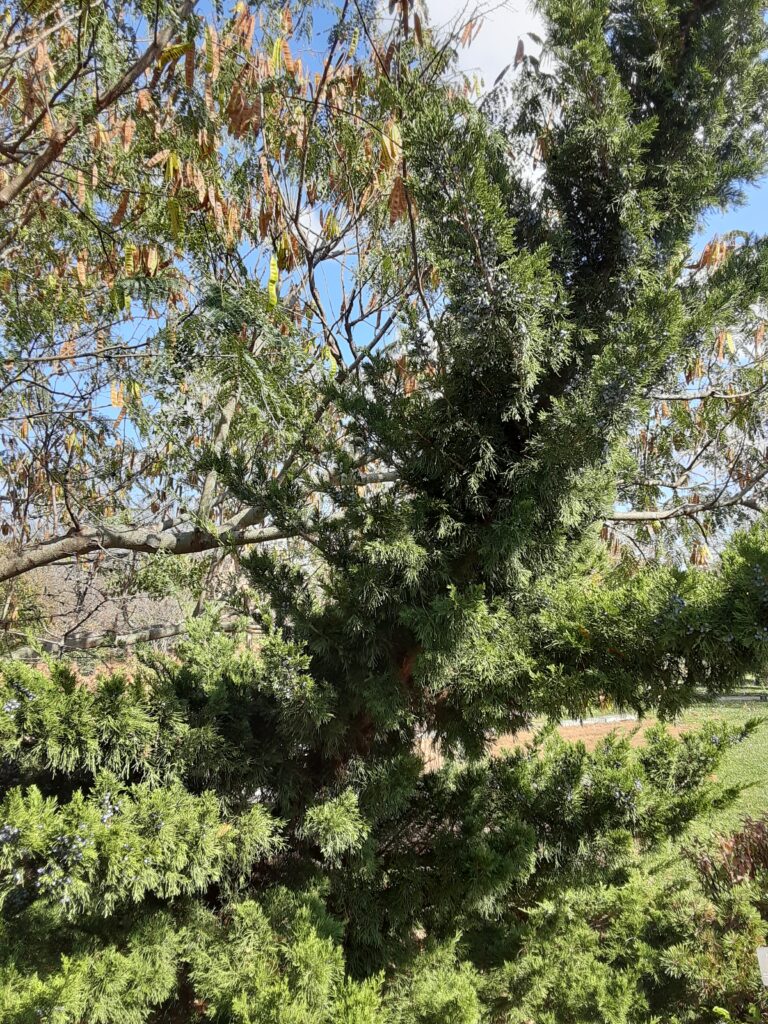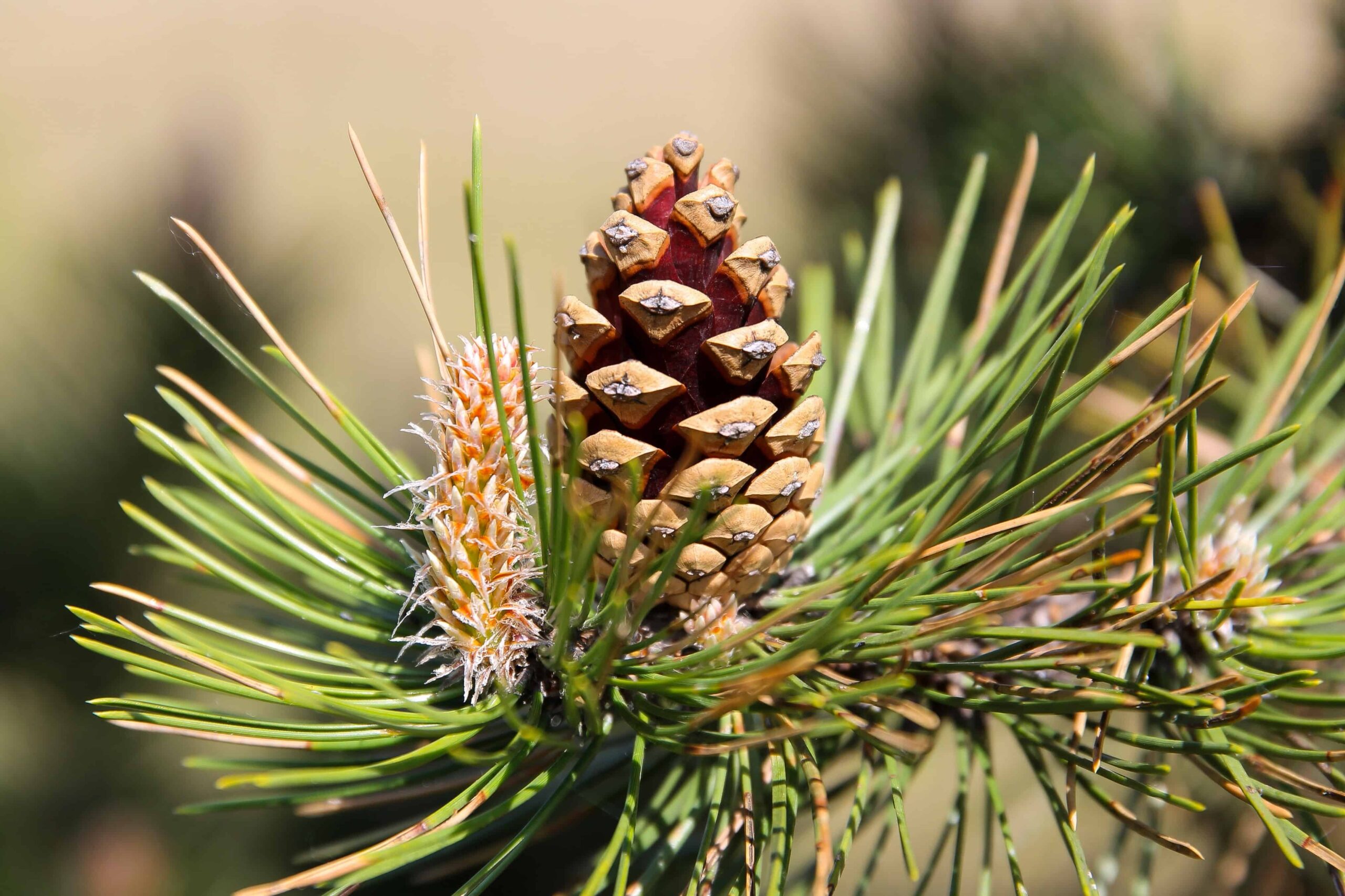This week’s snow reminds us that winter is coming, and soon we’ll be extra-grateful for plants that retain traces of green during the months when all the color has leached out of our landscape. That makes this a perfect time to visit Powell Gardens’ Conifer Garden. What other options do we have besides junipers and yews? I have some of these growing in my own yard, as well as boxwood and holly—and I expect you do too. But we don’t need to limit ourselves to just a few familiar choices. The collection at Powell Gardens represents almost every type of conifer hardy in our area, including pines, spruce, firs, cypress, arborvitae, hemlock, and even ginkgo. The collection now contains over 100 varieties and has been certified as a Reference Garden by the American Conifer Society.

Before I continue, I should point out the distinction between evergreens and conifers. Plants that don’t lose their leaves (or needles) are considered “evergreen.” Conifers reproduce by forming cones. While not all evergreens are conifers (like holly, southern magnolia, and boxwoods), most conifers are evergreen—think pine, spruce, and juniper. To complicate things more, some conifers aren’t evergreen at all. The collection at Powell Gardens contains a bald cypress, which is deciduous and loses its needles each winter; a rare ‘Chief Joseph’ Lodgepole Pine (Pinus contorta), whose needles turn yellow in the fall and green up in spring; and ginkgo. Most conifers do have needles instead of leaves, an adaptation that helps them survive challenging growing conditions.
Located just north of the Visitor Center, the Conifer Garden is shady and intimate, on the scale of a suburban yard—which may help gardeners imagine how conifers can be used in their home landscapes, as well as give them a sense of scale. Apparently, a number-one problem people have with conifers is underestimating how large they can grow. While the rest of Powell Gardens’ many areas are wan and faded at this time of year, the conifer area is bright with vibrant color: chartreuse, yellow, silver, and dark greens.

The diversity of shapes and contrasting textures is invigorating. Some of the conifers are tall trees, while others are low mounds, offering welcome variety and relief from monotony. (Most of the things in my yard are four feet high.) Some have interesting, sculptural shapes.

The area has recently been renovated. Marissa Adams, the lead for the conifer garden, and volunteer Deb Guardia began working in May, doing a plant-by-plant evaluation. They removed poorer specimens, weeded, and topped off the pea gravel mulch, which Marissa says does a great job keeping down weeds. The color and texture of the foliage stands out against the pale gravel. “Renovated means thinned,” Deb points out. The extra breathing room helps showcase the specimens and contributes to their health and vigor.
The garden originated in 2001 when gardener Marvin Snyder, a past president of the American Conifer Society, donated a collection of dwarf conifers that had been used in a temporary model railroad exhibit in the conservatory. In 2006, berms were created from sandy soil excavated during the construction of the nearby Fountain Garden. Described as “sandstone rubble subsoil,” this proved to be ideal for the conifers, most of which require well-drained soil. Our area’s heavy clay soil can be problematic for this reason. “They don’t like being to put to bed wet,” Deb says. Conifers do need moisture to get established, and they may need watering during the winter. Pruning is best done when the tree is dormant, and dressing wounds is unnecessary.
Some conifers seem to struggle here, like Scots Pines, which have been dying off because of pine wilt. Each species has its own potential problems and vulnerabilities. Some species of juniper are native, such as eastern red cedar, but as horticulturist Dennis Patton points out, Kansas is the only state without a native pine: “Missouri does but not locally in KC.” Conifers evolved under different, mostly colder conditions, and that makes it tough for some to do well here. Patton says, “Evergreens that are non-native struggle with our too syndrome: Too wet, too dry, too cold, too hot, too windy and all the combinations.”
Nevertheless, as the Conifer Garden shows, Kansas City homeowners have literally hundreds of options besides dependable yews and junipers. All provide winter interest, sustained color, structural variety, and contrasting textures. With the right care, conifers of all shapes, sizes, and colors can provide beauty and interest in the garden year-round.
